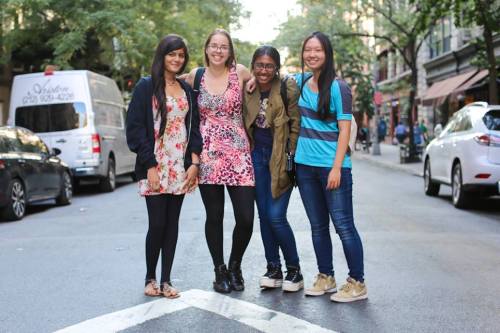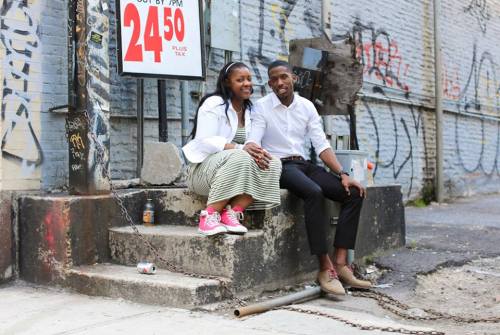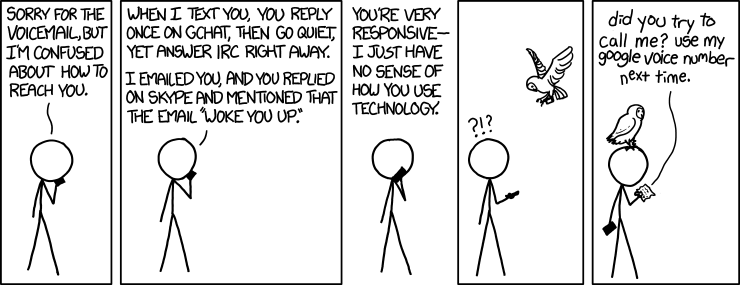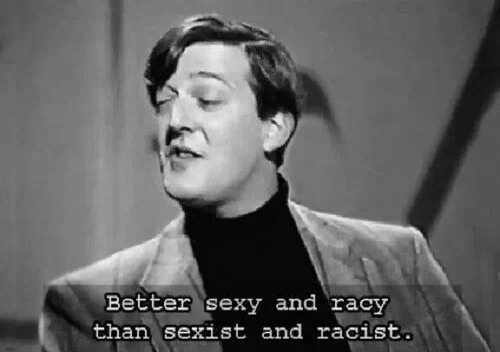Shared posts
Fall Movie Preview: 16 Oscar Contenders to Watch For

If you're a filmmaker looking to attract smart, adult audiences and award-show buzz this fall, it seems your best bet may be to set your movie in one of the following settings: out at sea, out in space, or in any year before 1980. Who knows which actors and directors will walk away winners at the Oscars next March, but here are 16 highly anticipated releases that hold plenty of promise.

Rush
September 13
Ron Howard takes on the true story of two Formula One rivals—Britain’s free-spirited, charismatic James Hunt (Chris Hemsworth) and Austria’s hyperfocused Niki Lauda (Daniel Brühl)—whose constant one-upmanship in the 1970s pushed international auto racing to both glorious new highs and tragic new lows.
With titles like Apollo 13, Cinderella Man, A Beautiful Mind, and Frost/Nixon on his résumé, director Howard has become one of the most dependable names in American cinema for sturdily enjoyable and affecting films—and Rush explores some of Howard’s favorite themes, like the intimacy of male competition and the power of steadfast, unconditional married partnerships. Come for the adrenaline-fueled racetrack scenes and Hemsworth’s likable, long-haired James Hunt lookalike, but stay for Catalonia-born Brühl—who you might recognize from 2009’s Inglorious Basterds—as the almost sociopathically dedicated Lauda.
Watch a trailer here.

Gravity
October 4
Gravity’s concept alone captivates and unnerves: Disaster strikes astronauts on a routine spacewalk, leaving them stranded in deep space. Then there are the Hollywood bona fides: George Clooney and Sandra Bullock play the astronauts, and the director is Alfonso Cuarón, whose Y Tu Mamá También and Children of Men many movie buffs consider to be among the new millennium’s finest films. Then there are the terrifying, gripping trailers.
Critics say it all adds up to a thrill that's like little else. "I still haven't recovered," wrote The Village Voice's Stephanie Zacharek after seeing the film. Jon Frosch, reporting for France 24 and The Atlantic, called it a “master class in fluid camerawork, bold, unfussy imagery, and special effects that put most recent Hollywood blockbusters to shame.”
Watch the trailer here.

Blue is the Warmest Color
October 9
An erotic lesbian romance movie based off a graphic novel? That may sound like a salacious longshot for a possible Oscar contender, and, indeed, the French film has been likened to pornography for its lengthy and explicit sex scenes. But critics are praising Blue Is the Warmest Color not because it’s filled with flesh, but because breakthrough performances from Adèle Exarchopoulos and Léa Sedoux nail the emotional roller coaster of a young love tested by socioeconomic class and family loyalties.
Though the author of the original graphic novel has criticized director Abdellatif Kechiche’s approach to the sex scenes, reviews have called Blue the female answer to Brokeback Mountain, and the film took home the Cannes film festival's prestigious Palme d'Or prize.
Watch the trailer here.

Captain Phillips
October 11
Two-time Bourne director Paul Greengrass already tackled a film about hijacking with the acclaimed 9/11 thriller United 93, so he was a natural choice to bring the most famous Somali pirate standoff to the big screen. Starring Tom Hanks as its titular character, Captain Phillips tells the story of the Maersk Alabama, a cargo ship that was taken over by a handful of armed Somali teens back in 2009—the first time a U.S. ship had been captured since the 1800s.
The film’s attempts at humanizing and contextualizing the pirates (all played by Somali immigrants who have never acted before) have been met with mixed reviews, but nearly every critic who’s seen the movie has praised the masterful, escalating tension of the movie’s final act—impressive, considering it takes place in a tiny lifeboat.
Watch the trailer here.

12 Years a Slave
October 18
It’s only September, but there’s already serious Oscar chatter—of the Best Picture variety—surrounding 12 Years a Slave. Set in 1841, Steve McQueen’s film follows the tribulations of a free Northern black man (Chiwetel Ejiofor) who gets captured while visiting Washington, D.C. and is then sold into slavery. Alfre Woodard and Kenyan actress Lupita Nyong’o co-star as a plantation owner’s common-law wife and a fellow plantation slave, respectively; Michael Fassbender, Brad Pitt, Paul Dano, Paul Giamatti, Benedict Cumberbatch, and Sarah Paulson also appear.
But its big-name list of promising performances isn’t the only reason critics have been murmuring. According to Adam B. Vary at BuzzFeed, 12 Years a Slave is “one of the only American films to deal head-on with slavery.” When it screened last week at the Toronto International Film Festival, viewers were stunned; as Entertainment Weekly’s Anthony Breznican reported, the audience “communicated at first mostly in deep exhales and short exclamations” after the film ended, but then “managed to shake off its collective shellshock for a standing ovation.”
Watch a trailer here.

All Is Lost
October 25
The survival genre still, well, has life in it, with recent Oscar contenders like Life of Pi and 127 Hours finding new ways to tell the tale of man vs. wild. All Is Lost, though, doesn’t put a twist on the conceit so much as it strips it to its essentials. There's almost no dialogue, and the sole credited actor is Robert Redford, playing a shipwrecked sailor facing storms and sharks.
With J.C. Chandor, the young filmmaker behind 2011’s riveting financial-crisis drama Margin Call, directing, Cannes critics hailed the movie’s “daringly minimalist” ethos and Redford’s "tour de force performance."
Watch a trailer here.

The Counselor
October 25
The last couple of times Pulitzer Prize winner Cormac McCarthy’s work made it to the big screen—with the Academy Award-winning 2006 adaptation of his novel No Country for Old Men and 2009 adaptation of his chilling The Road—REM cycles all over America were subsequently interrupted by quietly spooky, minimalist, dystopian nightmares. So now that he’s trying his hand at an original screenplay, a thriller about a lawyer (Michael Fassbender) who gets in a jam when he teams up with a drug dealer (Javier Bardem, in his second role as a McCarthy villain) and attempts to sell $20 million worth of cocaine, the results could be disturbing in the very best of ways.
As Slate’s Sharan Shetty put it, The Counselor is a “cinematic dream team” kind of project. Directed by Ridley Scott, it co-stars Bardem, Brad Pitt, and Penelope Cruz—the four of whom have a total of nine Oscar nominations between them—plus Cameron Diaz and Breaking Bad’s Dean Norris.
Watch a trailer here.

Ender’s Game
November 1
Fans of Orson Scott Card’s canonical work of young-adult science fiction have, lately, had reason to fear for its film adaptation’s success. Card’s views on homosexuality have drawn loud protests and boycott calls, which that doesn’t reflect on the movie’s quality but does lend the proceedings an unhappy air. More importantly, the involvement of Alex Kurtzman and Robert Orci, script doctors behind high-concept Hollywood spectacles like Star Trek Into Darkness and Cowboys & Aliens, seems like a decidedly mixed omen for anyone interested in character development or plausibility.
But! Card’s morally rich coming-of-age tale, about kid cadets playing video games as battle prep for an alien attack, remains as compelling as it was when it was published in 1977. And the cast is impressive: Distinguished names like Harrison Ford, Ben Kingsley, and Viola Davis are among the adults, and child stars Asa Butterfield (Hugo) and Hailee Steinfeld (True Grit) have grabbed big acclaim in their short careers. So there might just be enough talent here for a smart, emotionally true adaptation of some spectacular source material.
Watch a trailer here.

The Book Thief
November 15
Markus Zusak’s 2006 young-adult novel The Book Thief, set in Germany during World War II, was once derided in The New York Times as “Harry Potter and the Holocaust.” It’s the story of a disadvantaged teenage girl who develops a book-theft habit after her foster father teaches her to read and then shares her books with her neighbors and the Jewish man hiding in her basement—so it’s fair to say The Book Thief does have its blaringly uplifting YA tendencies.
But it went on to be named that year’s School Library Journal Best Book of the Year and Publishers Weekly Best Children Book of the Year, and The Guardian’s Philip Ardagh called its tale “Unsettling, thought-provoking, life-affirming, triumphant and tragic,” writing that should be experienced by all ages (indeed, it was advertised in some countries as adult fiction and in others as children’s fiction). Twelve-year-old Canadian actress Sophie Nelisse, the star of 2011’s acclaimed French-language film Monsieur Lazhar, plays Liesel in this fall’s film adaptation. Emily Watson and Geoffrey Rush play her foster parents.
Watch a trailer here.

The Wolf of Wall Street
November 15
Leonardo DiCaprio has turned in some of his most famous performances playing characters whose identities are tied to money, class, and the American Dream—Jack in Titanic, Gatsby in The Great Gatsby, and Howard Hughes in The Aviator, to name a few examples. Next up is Jordan Belfort, a stockbroker and entrepreneur who amassed incredible wealth in the ‘90s and then was prosecuted for fraud.
Martin Scorsese directs DiCaprio in a dark comedy that’s penned by Sopranos and Boardwalk Empire writer/producer Terence Winter and focuses on the outrageous, rock-star-style opulence of Wall Street in boom times. The star researched the role by hanging out with Belfort himself, and the results, to hear DiCaprio tell it, were colorful: “I would bring pages of notes from my meetings with Jordan—things like this insane orgy on a 747 going to Vegas, chimpanzees in diapers that would skate through the Stratton offices, very intimate stuff about his relationships with women—and Marty was game to try everything.”
Watch a trailer here.

Nebraska
November 22
Director Alexander Payne is the king of films about family, aging, and journeys, as he’s demonstrated with 2002’s About Schmidt, 2004’s Sideways, and 2011's The Descendants. With Nebraska, Payne hits his familiar themes, this time in black and white, while returning to his home state.
Bruce Dern plays an old alcoholic whose declining mental faculties lead him to believe he’s won a million-dollar sweepstakes. Saturday Night Live alum Will Forte delivers his first dramatic role (for which he beat out Bryan Cranston and Paul Rudd) as the son who joins him on the trip to collect the non-existent prize money, uncovering his father’s demons along the way. Early response to the film has been overwhelmingly positive—after it debuted at Cannes, the film festival’s jury gave Dern the award for Best Actor.
Watch the trailer here.

Inside Llewyn Davis
December 6
Few contemporary filmmakers can match the Coen brothers’ catalog of modern classics: Fargo, The Big Lebowski, No Country for Old Men, Blood Simple, and O Brother, Where Art Thou, to name just a few. So it’s quite exciting that the buzz on Inside Llewyn Davis says it ranks among the Coens’ very best.
The film follows a folk singer (played by Guatemalan musician Oscar Isaac) in 1961 New York City, trying to get by on his tunes, care for a stray cat, and deal with romantic entanglements. The supporting cast—John Goodman, Carey Mulligan, and Justin Timberlake—is impressive, but some of the reviews out of Cannes this past spring sounded more than impressed. Writes Indiewire’s Eric Cohn, “An ode to art for art's sake, Inside Llewyn Davis is the most innocent movie of the Coens' career, which in their case is a downright radical achievement."
Watch a trailer here.

American Hustle
December 13
David O. Russell is fresh off a pair of successes with 2010’s The Fighter and last year’s The Silver Linings Playbook, and this time he ventures to the scuzzy urban underworld of the 1970s for the true story of Abscam, the FBI’s 1980 undercover operation aimed at curbing corruption in Congress.
American Hustle’s cast list boasts a few of David O. Russell’s collaborators from his last two films. Christian Bale and Amy Adams, co-stars in The Fighter, reunite as Irving Rosenfeld, a brilliant con man forced into assisting the FBI, and Irving’s partner in crime and mistress, Sydney Prosser. Jennifer Lawrence, meanwhile, plays Irving’s volatile wife, and her Silver Linings co-star Bradley Cooper plays the FBI agent who recruits Irving for Abscam. Jeremy Renner, Robert DeNiro (another Silver Linings alum), and Louis C.K. also appear in supporting roles. Bottom line: Everybody here is either a long-standing sure thing or a relative newcomer on a hot streak—so there’s potential for American Hustle to complete an Oscar-nomination hat trick for Russell.
Watch a trailer here.

The Monuments Men
December 18
During World War II, the American government cobbles together the Monuments, Fine Arts, and Archives Program, a coalition of international art experts whose mission is to recover and restore famous works of European art that Hitler and the Nazis have seized and threatened to destroy. The plot of George Clooney’s latest directorial effort may sound like a crazy, art-infused mash-up of Ocean’s Eleven (heists!), Indiana Jones (Nazis!), and Argo (Americans getting into scrapes abroad!)—and sure enough, it borrows elements from all three of those entities, as it stars Clooney, Matt Damon, Cate Blanchett, and John Goodman, while Argo producers Clooney and Grant Heslov have re-teamed to produce The Monuments Men. Bill Murray and Bob Balaban appear, too.
And like Argo, it’s based on a true story. “I said [to Heslov], ‘You know, we tend to do a lot of cynical projects, and it would really be nice to do one where there wasn’t any cynicism in it,’” Clooney told Adam Markovitz of Entertainment Weekly. Luckily for Clooney, Heslov had just picked up a copy of Robert M. Edsel’s 2009 book, Monuments Men, in an airport.
Watch a trailer here.

Her
December 18
Anthropomorphizing technology is a common act in our increasingly digital lives: We talk back to the voices navigating our cars’ GPS systems, and we give our beloved smartphones and other prized gadgets human nicknames. Director Spike Jonze takes this concept to a not-so-distant extreme in Her, a film about a sensitive divorcé (Joaquin Phoenix) who falls in love with the sound of his life-like, personalized operating system, voiced by Scarlett Johansson.
But Lars and the Real Girl this is not: As the voice of “Samantha,” Johansson turns the cold concept of artificial intelligence into something warm, familiar, and lively, making the questions posed by the film’s futuristic premise all the more worth pondering.
Watch the trailer here.

Saving Mr. Banks
December 20
When Mary Poppins premiered in 1964, it won critics’ hearts and several Academy Awards for its groundbreaking mix of live action and animation that amused audiences both young and old. The behind-the-scenes production, though, was not so magical: Walt Disney spent decades trying to acquire the film rights from the Mary Poppins books’ author, P.L. Travers, who detested the adaptation’s supercalifragilisticexpialidocious songs and whimsical makeover that departed from her darker, original work.
Based on Valerie Lawson’s Travers biography, Saving Mr. Banks recounts those persuasive meetings between Travers (Emma Thompson) and Disney (portrayed on screen for the first time, by Tom Hanks) while delving into Travers’s childhood in Australia, where her difficult relationship with her father inspired the new movie’s title character.
Watch the trailer here.
Men Feel Bad Around Smart, Successful Women
We’re celebrating the end of the year with our most popular posts from 2013, plus a few of our favorites tossed in. Enjoy!
You know all those badass ladies out there that are inexplicably single? Well, maybe it’s not so inexplicable.
In a study contending for most-depressing-research-of-the-year, psychologists Kate Ratliff and Shigehiro Oishi tested how a romantic partner’s success or failure affects the self-esteem of people in heterosexual relationships. The short story: men feel bad about themselves when good things happen to their female partners. Women’s self-esteem is unaffected. Here’s some of the data.
The vertical axis represents self-esteem. In this experiment, respondents were told that their partner scored high on a test of intelligence (“positive feedback”) or low (“negative feedback”). The leftmost bars show that men who were told that their partners were smart reported significantly lower self-esteem than those who heard that their partners weren’t so smart.
In the second condition, respondents were asked to imagine a partner’s success or failure. Doing so had no effect on women’s self-esteem (rightmost bars). For men, however, imagining their partners’ success made them feel bad about themselves, whereas imagining their failure made them feel good.
The various experiments were conducted with American and Dutch college students as well as a diverse Internet sample. The findings were consistent across populations and were particularly surprising in the context of the Netherlands, which is generally believed to be more gender egalitarian.
We’ve got a long way to go.
Cross-posted at The Huffington Post and Pacific Standard.
Lisa Wade is a professor of sociology at Occidental College. You can follow her on Twitter and Facebook.(View original at http://thesocietypages.org/socimages)
Assumptions, Agenda, and How the Conversation Really Goes Down
I’ll preface this post by saying that the real life Dr. Isis is pretty spectacular. My kids are cute. My research is hilarious. The online Dr. Isis is pretty fucking disenfranchised. I am over feminism and I am over the online academeratti. Mostly, because I realize that although they seem to have a lot of opinions about how I should do things, we don’t share the same core, fundamental values and I fear that we never will.
As readers of this blog will no doubt be aware, my latest round of disenfranchisement began when Michael Eisen called me a hypocrite for seeking to publish a paper in a high impact factor journal. I wrote about the shenanigans here. Now, admittedly Michael offered his apologies. I decided to take the low road, reject said apology, and tell the #OpenAccess movement to go fuck itself.
Even though Michael probably truly believes he has been sincere, it’s the emptiest of apologies. Why the rudeness and incivility from La Dra. Isis?
Because no one learned shit for dick from this interaction and it infuriates me. Let me share with you the inside baseball about how these interactions go down, beginning with the pivotal moment in which Michael Eisen calls your beloved blog hostess a hypocrite. I respond with…
Because, as you all know, I took great offense at being told what my priorities and moral obligations should be. The part that you likely didn’t see is the shit that followed.
My response to Michael Eisen came from a particular place. Was influenced by a particular world view and my identification with a particular group. Not long after the initial tweeting between Michael and I, the junior scientists of Twitter (assistant professors and postdocs) joined in. I feel their support, and I am so thankful for it (see Proflike for a particularly good post on the matter), but my core point about how it is particularly problematic to ask minority scientists to be risk takers was dominated by a new narrative about how important it is for all junior faculty to get tenure. How “we all” gotta keep our jobs. And we got to hear about how Ethan Perlstein is a special little snowflake and how we should all leave the game and join him. This was my reaction to that hot bag of fuck. Per the usual, the whole conversation quickly got white washed.
What happened next was particularly problematic, but typical and endemic to this culture.
The minority scientists picked up their drinks and moved to the back room to keep talking where they could be heard.
I got phone calls from my hermanos who vented to me about the changing rules of the system and how minorities are always expected to know how to play the game, but never find out the rules until it’s too late. And, they’re excluded from the circles that make the rules in the first place. I got emails from folks with hilarious subject lines like “Preach it, Vato” (which was my personal favorite). I got text messages from people who said things like “I have your back in this, but I don’t feel powerful enough to join you [paraphrased a la Isis].”
There was a whole conversation that happened that most people didn’t see because the mainstream culture we exist in refuses to do one simple, basic thing.
It refuses to ask questions and it refuses to listen before it speaks.
Mainstream culture counters conflict by offering its own seemingly (to them) universal experiences. It offers these experiences until it is blue in the face and until they feel truthy for all, never noticing that they’ve talked over the original point. Then they get to problem solving. And then comes the most infuriating step in the process…
It tells you that it can empathize.
No you can’t, motherfucker! The mainstream culture doesn’t understand dick and won’t in the forseeable future because no one at any point in these discussions stops to really ask about the experiences of the others. They create experiences and solutions that make them feel good – like they’re making strides toward increasing the number of diverse voices – but they never actually listen. If there’s any doubt in your mind, sit in one of these discussions and count the relative number of “I” statements and the relative number of questioning statements.
And Drugmonkey and Miko hit the nail on the head as to why the Open Access movement is the most troubling representative of this culture. Michael Eisen and others in the movement treat junior scientists as the infantry men, sent out to accept the machine gun spray for the greater cultural good. Minority scientists are the ones most likely to take the bullet. The deck is already stacked against them. They’ve got no body armor. In my culture, community is a core value and I can see my brothers and sisters being persuaded to take the bullet because its proposed as the “moral” thing to do. Yet, I was reminded in a conversation yesterday that one of the biggest bits of outreach an underrepresented scientist can do, is to move to the next level. Get a PhD. Get a faculty job. Get tenure. Every time you open a door ahead, you leave five open behind you and that is important to our community.
So, I leave the conversation today with a newly found peace of mind. A sense of what feels right to me. I can get behind the idea of open access as an abstract concept. But as far as the general “community?”
If only I could give fewer than zero fucks.
(My sincerest thanks to the incomparable Dr. Rubidium for the amazing GIFs. She is truly a genius of indignant hilarity and role model to us all. I aspire to be more like her.)
Study: People May Naturally Be Lovers or Haters

Problem: People like things, and they don’t like other things. A study published in the Journal of Personality and Social Psychology aims to explain the difference between lovers and haters by examining whether people are just innately predisposed to dislike or like things, depending on their personalities.
- Study: Disgusting Sweaty Palms Sometimes Help With Business Deals
- Study: Less Time at the Office Doesn't Make People Happier
- Study: How to Feel Less Ashamed of the Embarrassing Things We Buy
Methodology: Researchers determined people’s “dispositional attitudes,” or their tendencies to like or dislike things by…just asking them if they liked things. All kinds of things. Things like “bottled water,” “curtains,” “mullets,” and “extinction.”
Okay, it was a little more complicated than that. Things that were more or less universally regarded as extremely positive or extremely negative were eliminated, and the researchers used people’s scores from the remaining 100 things to establish their baseline tendency toward liking or disliking. They eventually pared the questionnaire down to 16 items that can be used to test someone’s dispositional attitude.
Other experiments tested not only participants' dispositional attitudes but also whether they generally felt positive or negative emotions. They were then asked to report their feelings on a new product (a microwave) after reading three positive reviews and three negative reviews.
Results: The lovers loved and the haters hated, as they are wont to do. A positive dispositional attitude was associated with higher openness and curiosity, and feeling more positive emotions (the things they liked were making them happy I guess) and a negative one was associated with negative emotions. What’s more, people’s general tendency to like things or not like things was a pretty good predictor of whether they would like something new, in this case, the microwave.
Implications: If you’re cranky and you hate everything and everyone, chances are, if presented with a mystery item, you won’t like it. If you are infectiously, virally happy, if you are a meme of happiness and liking things, you’ll probably like any new thing you come across, too. And in your heart of hearts, you already know which one you are.
The study, Attitudes without Objects: Evidence for a Dispositional Attitude, its Measurement, and its Consequences, appeared in the Journal of Personality and Social Psychology.
You Can Now Post GIFs on Facebook

Listen: Facebook is no one’s favorite social network. It’s excellent at nothing in particular, mediocre at mostly everything, and maybe surveilled by the government.
But yesterday, you could not post GIFs to Facebook.
And, today, you can.
Now, GIF only animate on Facebook when you link to a GIF’s page on Giphy.com. So you can’t just use GIFs from anywhere: You have to use the version on Giphy’s site. This makes me — and The Atlantic’s social media editor, Chris Heller — wonder if this just a hack, perpetrated by Giphy, which will last no longer than a few days.
But even so. In the power vested in me by the 156 year history of the magazine, I declare: This is awesome.

By David Harper, found at Stone Quarry Hill Art Park.

By David Harper, found at Stone Quarry Hill Art Park.
Always reblog. Charlotte ain’t NEVER lied.

Always reblog. Charlotte ain’t NEVER lied.
What’s Wrong with White Culture?
 All In with Chris Hays does a great job mocking the “What’s wrong with Black culture?” question. He and his “guest,” Gawker’s Cord Jefferson, straight-face skewer news programs that take every instance of African American law breaking as an opportunity to castigate the group writ large. It’s great satire:
All In with Chris Hays does a great job mocking the “What’s wrong with Black culture?” question. He and his “guest,” Gawker’s Cord Jefferson, straight-face skewer news programs that take every instance of African American law breaking as an opportunity to castigate the group writ large. It’s great satire:
Via Todd Krohn at The Power Elite.
Lisa Wade is a professor of sociology at Occidental College. You can follow her on Twitter and Facebook.(View original at http://thesocietypages.org/socimages)
August 15, 2013

Things are cooking for the return of BAHFest. Stay tuned.
Ran into these young women in Chelsea. They told me they’d...

Ran into these young women in Chelsea. They told me they’d just met at a summer programming course called Girls Who Code. “The program tries to close the gender gap in technology,” they told me. “We’ve learned a lot of awesome things. But the best part is that we’ve gotten to meet some really cool female programmers. It’s much less intimidating knowing that there are women in the field who are happy, well-adjusted, and doing awesome things. It’s good to know that programmers aren’t just pale guys who sit alone in their basements.”
A Guide to the Web's Growing Set of Free Image Collections

On Monday, the J. Paul Getty Trust launched their Open Content Program, making more than 4,600 high-quality images of artwork available for free online. The digital images -- of paintings by Van Gogh, drawings by Rembrandt, and watercolors by Dürer -- had already fallen into the public domain, but the Getty's program makes their digital reproductions much easier to use on the web.
They're not the first museum to put so many images online this year. In the spring, the Rijksmuseum opened 125,000 digital images for use, with plans to digitize an additional 40,000 images from its archive every year.
When museums emancipate images like this, the benefits don't only redound upon the researchers, teachers, and students who can use and show high-resolution art in their books, lectures and papers. Putting images online helps anyone who wants to make a point with pictures, whether on their website or Facebook profile, on a t-shirt or, as a Rijksmuseum curator told the New York Times, on special Rembrandt toilet paper.
Below, we've listed the museums and research institutions that have large, high-quality, free-to-use collection of historically or aesthetically notable images online.
The J. Paul Getty Trust The Getty's Open Content Program goes beyond reproductions of paintings and drawings: It includes photographs of architecture, sculpture and jewelry. If you're looking for an introduction to the collection, the Getty's highlighted 39 images it thinks are its best.

Rijks Studio The digital image collection of the Netherlands's state museum, Rijks Studio encompasses 125,000 images right now and will expand until it includes the Rijksmuseum's more than one million holdings. The museum's holdings extend to the 21st century, but its online offerings are especially rich in the Dutch Golden Age artists, like Rembrandt and Vermeer.

Calisphere Hosted by the University of California, this "world of primary sources" includes illustrations, photographs and reproductions from California history, including a crate label archive from the public library of Orange, CA, and a large collection of photography and ephemera from WWII Japanese internment camps.

NASA The American space agency makes both astronomy and historical photos available from the multimedia page of its website; above, Neil Armstrong and David Scott in the Gemini 8 capsule.

National Gallery of Art The American gallery's collection includes 25,000 images, including works by Leonardo, Monet and Winslow Homer.

Flickr Commons One of the best-known of the web's free galleries, the Commons collates photography with "no known copyright restrictions" from institutions around the world. Its archive is predominantly from English-speaking countries, but that includes both Australia and New Zealand's National Libraries. Flickr Commons also represents collections based in the United Kingdom, Scandinavia, and eastern Europe.

Wikipedia Featured Pictures That Wikimedia Commons has a huge library of free pictures is fairly common knowledge for Internet image sniffers, but Wikipedia's page devoted to "Featured Pictures" remains little known. "This page highlights images that the Wikipedia community finds beautiful, stunning, impressive, or informative," it reads, which means it stays updated as Wikipedia editors find gorgeous high-quality images on the site. Its are and history sections are impressive, as are its sections devoted to flora and fauna photography.

Library of Congress Prints & Photographs Online Catalog The LOC's catalog may be the only source here with its own anonymous Twitter account: @libraryofaleph tweets only the name of items in the collection, yet often does so to a clear rhetorical end. (After George Zimmerman was found not guilty, it tweeted almost exclusively the names of prints related to African-American history.) The success of @libraryofaleph is due, in part, to the breadth of the library's catalog: Its collection of free images includes more than 900 WPA posters, more than 3,000 American art illustrations, 400 snapshots taken by the song-collecting Lomax family, and hundreds of color photographs taken during a survey of the Russian Empire between 1905 and 1915.

And the most charming among these may be the Washington State Coastal Atlas. In 2006 and 2001, and during the 1990s and 1970s, the state of Washington photographed its lengthy shoreline from the air. Those photographs, in the public commons, are now linked together and displayed at the state's Coastal Atlas. The collection can be navigated by city, county, or landmark. You can download high-resolution versions of the images and compare how the the coastline appeared through the different iterations of photography.

Know of any other bountiful image libraries on the web? Let us know below, or on Twitter at @yayitsrob.
The Washington State Coastal Atlas & NASA galleries via Charlie Loyd.
“So can you notice differences in their personalities...

“So can you notice differences in their personalities yet?”
“Absolutely. Emma’s the sensitive one. She likes to be held and comforted. And Mia is a big eater.”
Then Dad chimed in: “She eats like an animal.”
Lillian Leitzel
"People should do what they want, even if other people say...

"People should do what they want, even if other people say it’s crazy."
"What’s something you’ve done that other people said was crazy?"
"…. date him."
Houdini
"Technology is ruining people. I work in fashion, so I was at a...

"Technology is ruining people. I work in fashion, so I was at a fitting last Thursday. And there was a girl there— she was the assistant of the assistant. She had one job. One job. She was supposed to hand pins to the assistant. But when the assistant needed a pin, she was texting on her phone. One job."
Open Thread: Selling Bras with the Male Body
 Sorry for the spoiler! The gaze in the Wacoal commercial below, sent in by Kathe L., dances all over the body of a lovely young woman, focusing especially on the curve of her breast alongside the lace of her bra. She slowly removes her make-up and disrobes, only to reveal a male body underneath. The message? A push-up bra so good it can even give men breasts.
Sorry for the spoiler! The gaze in the Wacoal commercial below, sent in by Kathe L., dances all over the body of a lovely young woman, focusing especially on the curve of her breast alongside the lace of her bra. She slowly removes her make-up and disrobes, only to reveal a male body underneath. The message? A push-up bra so good it can even give men breasts.
I wonder what y’all think. Does this queer the body? Is there a transgressive identity behind the gaze? Or is it just more gimmicky advertising based on normative expectations? Both?
Lisa Wade is a professor of sociology at Occidental College. You can follow her on Twitter and Facebook.(View original at http://thesocietypages.org/socimages)
The Banal, Insidious Sexism of Smurfette
.
The Smurfs, originating as they did in mid-century Europe, exhibit the quaint sexism in which boys or men are generic people – with their unique qualities and abilities – while girls and women are primarily identified by their femininity. The sequel doesn’t upend the premise of Smurfette.
In the original graphic novels, Smurfette (or La Schtroumpfette in French) was the creation of the evil Gargamel, who made her to sow chaos among the all-male Smurf society. His recipe for femininity included coquetry, crocodile tears, lies, gluttony, pride, envy, sentimentality, and cunning.
In the Smurfs 2, there are a lot of Smurfs. And they all have names based on their unique qualities. According to the cast list, the male ones are Papa, Grouchy, Clumsy, Vanity, Narrator, Brainy, Handy, Gutsy, Hefty, Panicky, Farmer, Greedy, Party Planner, Jokey, Smooth, Baker, Passive-Aggressive, Clueless, Social, and Crazy. And the female one is Smurfette–because being female is enough for her. There is no boy Smurf whose identifying quality is his gender, of course, because that would seem hopelessly limited and boring as a character.
Here are the Smurf characters McDonald’s is using for their Happy Meals:
When you buy a Happy Meal at McDonald’s, the cashier asks if it’s for a boy or a girl. In my experience, which is admittedly limited to my daughters, girls get Smurfette. I guess boys get any of the others.
The Way It’s Never Been
Identifying male characters by their non-gender qualities and females by their femininity is just one part of the broader pattern of gender differentiation, or what you might call gendering.
There are two common misconceptions about gendering children. One is that it has always been this way – with boys and girls so different naturally that all products and parenting practices have always differentiated them. This is easily disproved in the history of clothing, which shows that American parents mostly dressed their boys and girls the same a century ago. In fact, boys and girls were often indistinguishable, as evident in this 1905 Ladies’ Home Journal contest in which readers were asked to guess the sex of the babies (no one got them all right):
.
The other common perception is that our culture is actually eliminating gender distinctions, as feminism tears down the natural differences that make gender work. In the anti-feminist dystopian mind, this amounts to feminizing boys and men. This perspective gained momentum during the three decades after 1960, when women entered previously male-dominated occupations in large numbers (a movement that has largely stalled).
However, despite some barrier-crossing, we do more to gender-differentiate now than we did during the heyday of the 1970s unisex fashion craze (the subject of Jo Paoletti’s forthcoming book, Sex and Unisex). On her Tumblr, Paoletti has a great collection of unisex advertising, such as this 1975 Garanimals clothing ad, which would be unthinkable for a major clothier today:
And these clothing catalog images from 1972 (left) and 1974 (right):
Today, the genders are not so easily interchangeable. Quick check: Google image search for “girls clothes” (left) vs. “boys clothes” (right):
Today, a blockbuster children’s movie can invoke 50-year-old gender stereotypes with little fear of a powerful feminist backlash. In fact, even the words “sexism” and “sexist,” which rose to prominence in the 1970s and peaked in the 1990s, have once again become less common than, say, the word “bacon”:
And the gender differentiation of childhood is perhaps stronger than it has ever been. Not all differences are bad, of course. But what Katha Pollitt called “the Smurfette principle” – in which “boys are the norm, girls the variation” — is not a difference between equals.
Cross-posted at The Atlantic and Family Inequality.
Philip N. Cohen is a professor of sociology at the University of Maryland, College Park, and writes the blog Family Inequality. You can follow him on Twitter or Facebook.(View original at http://thesocietypages.org/socimages)
How to Create a Fake Girlfriend on Instagram, in 8 Easy Steps
![[IMAGE DESCRIPTION]](http://cdn.theatlantic.com/static/mt/assets/science/assets_c/2013/08/insta_ketch-thumb-570x320-129326.jpg)
The stereotypical images of Instagram are so stereotypical, at this point, as to be cliches. A trio of glistening clouds presiding over a sun-drenched lake (#vacation). A poached egg, its innards oozing onto a plate (#brunch). A leaf carefully etched into the delicate milk-cloud of a latte (#caffeinefix). Friends. Family. Fun. Foam. Instagram is, at its best and at its worst, a place where you Live Your Best Life™ and then broadcast the living.
But what if your life isn't as best as it could be? What if there's something missing? What if, actually, there's someone missing?
The photographer Keisuki Jinushi has a solution to this problem -- in the form of a life hack that is less about the life, and more about the hack. The fix? Just invent a girlfriend! And then Instagram yourself on a date with yourself her!
To do this effectively, you'll need, at minimum: pancake makeup, a hair tie, a bottle of nail polish, and various props (preferably food items). You'll also need a highly developed sense of humor and/or gnawing loneliness and/or a finely honed appreciation of the absurd.
Got all that? Great. Then follow these easy steps. And you, too, will be on your way to Instagrammed bliss.
1. Apply makeup to the hand-skin. Preferably of a different color than your natural skin. Preferably onto your dominant hand.
2. Paint the fingernails of the dominant hand. Preferably pink. Allow to dry, approximately 15 minutes. Add a decorative hair tie to the wrist of the made-up, nail-painted hand.
3. Go to a coffee shop, a park, or another other place you might frequent with an actual girlfriend. If necessary, simply simulate that spot.
4. Use your dominant hand to mimic the gestures an actual girlfriend might make while seated across from you: squeezing your cheeks, feeding you treats, lovingly wiping errant condiments from your lips.
5. Use your other hand to snap a selfie of the dominant hand doing its stuff. Adjust angles and camera depths as necessary.
6. Filter the resulting images through one of Instagram's blurrier filters.
7. Post the filtered images to Instagram.
8. Revel.
Hat tip Design Taxi, via Digg.
Are Flights Full? Airline Advertising vs. Real Life
There’s a gem of an observation in Arlie Hochschild’s classic book, The Managed Heart. She observes that, at the same time that airlines try to ensure that planes take off with every last seat occupied, advertising for air travel typically does not depict fully booked flights. Frequent passengers covet the flight with an empty seat to their left or right, so marketers make sure that ads and commercials suggest that they might get lucky.
Here’s how American Airlines depicts the experience of flying (from a Google Image search of “cabin” on aa.com):
What a great example of not-quite-truth in advertising.
Lisa Wade is a professor of sociology at Occidental College. You can follow her on Twitter and Facebook.(View original at http://thesocietypages.org/socimages)
I made my first website with a friend when I was in 7th grade....

I made my first website with a friend when I was in 7th grade. It was called Gaming Galaxy Online. It was extremely cheesy— with a giant animated GIF as the title graphic, and pretty much all content harvested straight from other sources. The page never got any traffic, but I remember how exciting it was to build the site. The internet seemed like a place where a 7th grader could participate in the adult world on a level playing field. My friend and I tried one website idea after another. None of them really worked, but we felt very empowered. On the internet, it felt like we were one good idea away from a very adultlike level of success. And like pretty much everyone else in 1996, our free websites were hosted on Geocities.com.
Fast forward almost 20 years—- in my late twenties, after countless attempts, I’ve finally managed to create a popular website. And last night I was out gathering content. I was walking past the Apple Store on 59th and 5th when I spotted a man sitting alone in the plaza. I asked for his photo, he agreed. “What was the happiest moment of your life?” I asked him.
"Probably when my company had its IPO," he answered. "I founded a company called Geocities.com."
"I really enjoyed The Mists of Avalon, which is a retelling of...

"I really enjoyed The Mists of Avalon, which is a retelling of the Arthurian legends from the perspective of the female characters."









































